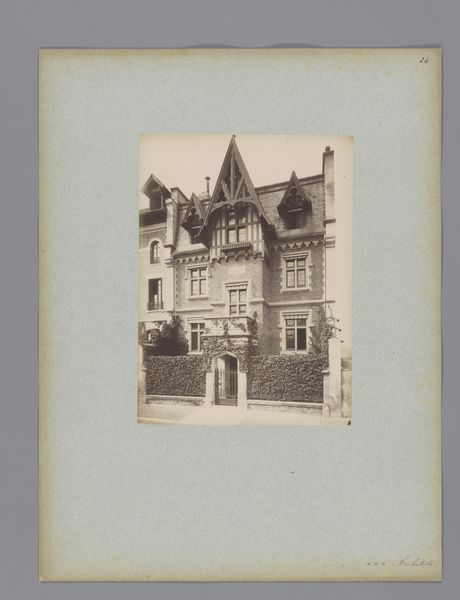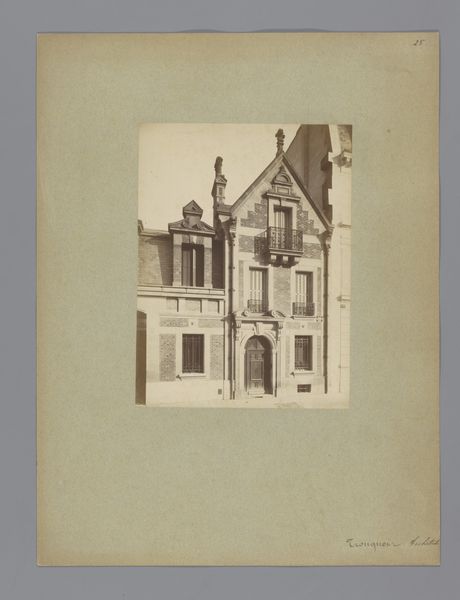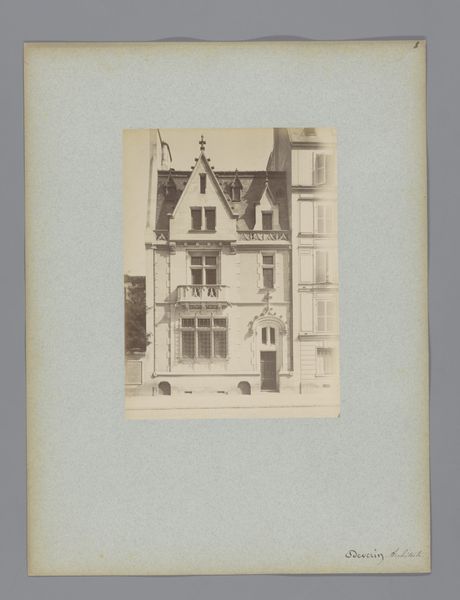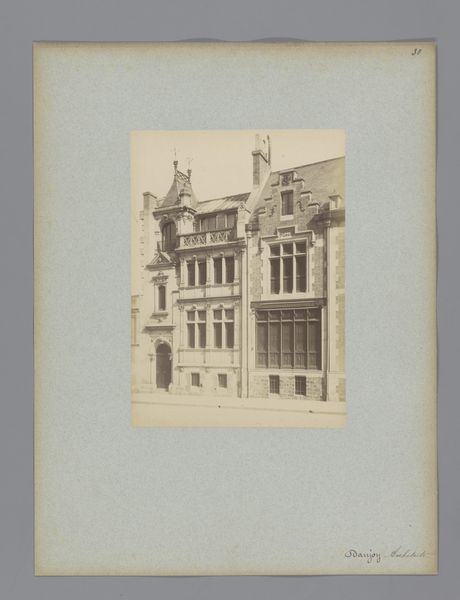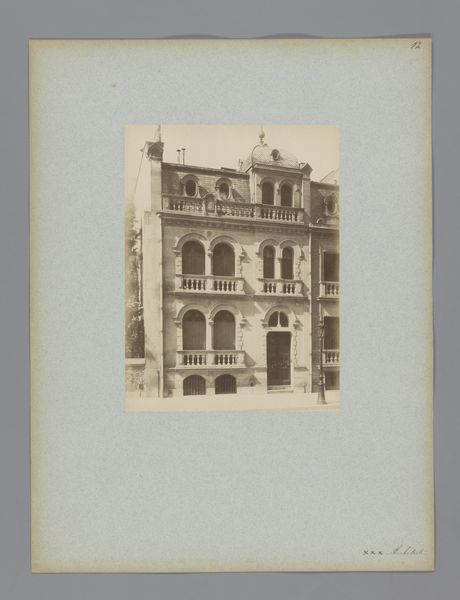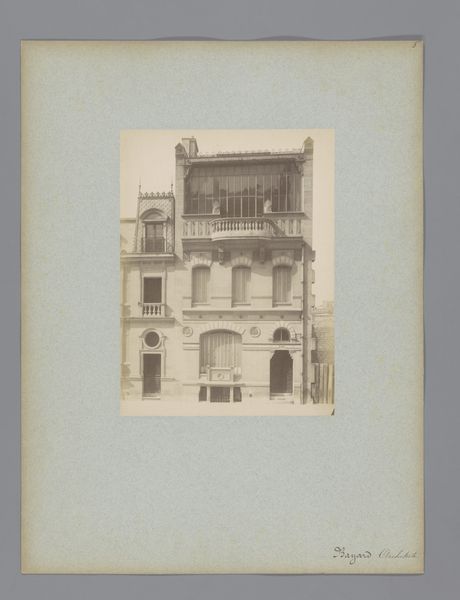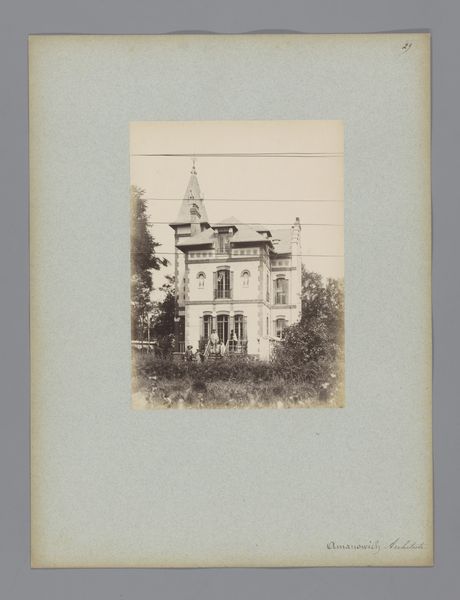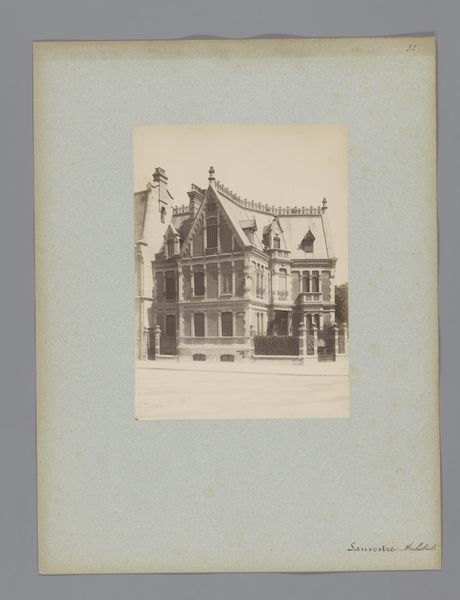
photogram, print, photography
#
photogram
# print
#
landscape
#
photography
#
cityscape
#
realism
#
building
Dimensions: height 221 mm, width 165 mm
Copyright: Rijks Museum: Open Domain
Editor: Here we have "Façade van een villa in Parijs, ontworpen door Stephen Sauvestre," a photogram from before 1880 by Lampué et Cie. The image is incredibly detailed. I am drawn to how this villa embodies a sense of Parisian bourgeois comfort and status. What is your take on it? Curator: This piece offers insight into the intersection of architectural design and photographic production during the period. Before widespread architectural photography, photograms served as crucial tools for documenting and disseminating designs. Look closely at the visible construction. Note the specific type of stone or brick used in its construction. How does that material speak to a larger story of industrial output and accessibility of such building materials at the time? Editor: That's fascinating, I hadn't considered the photograph as an artifact that captures material access. What else do you notice about the relationship between materials and meaning? Curator: Observe how the building's ornamentation is meticulously rendered through photographic chemistry. It invites us to consider the relationship between labor, craftsmanship, and the emerging industrialized practices of photography. It blurs lines between artisanal craft and technological reproduction. We have an image meant for reproduction using modern tools of the era. Editor: So it challenges this perception that architecture is separate from more traditional craftwork? Curator: Precisely! Photography provided a novel method of documentation that simultaneously depended on sophisticated chemical processes and relatively widespread availability to enable architectural ambition in places like Paris. What are your final thoughts? Editor: Thinking about the circulation of such photograms, it makes you realize how rapidly ideas about design and status could spread through these new image technologies. Thank you! Curator: Indeed, and hopefully, it inspires considering images in terms of tangible historical forces that shaped its very means of production.
Comments
No comments
Be the first to comment and join the conversation on the ultimate creative platform.
